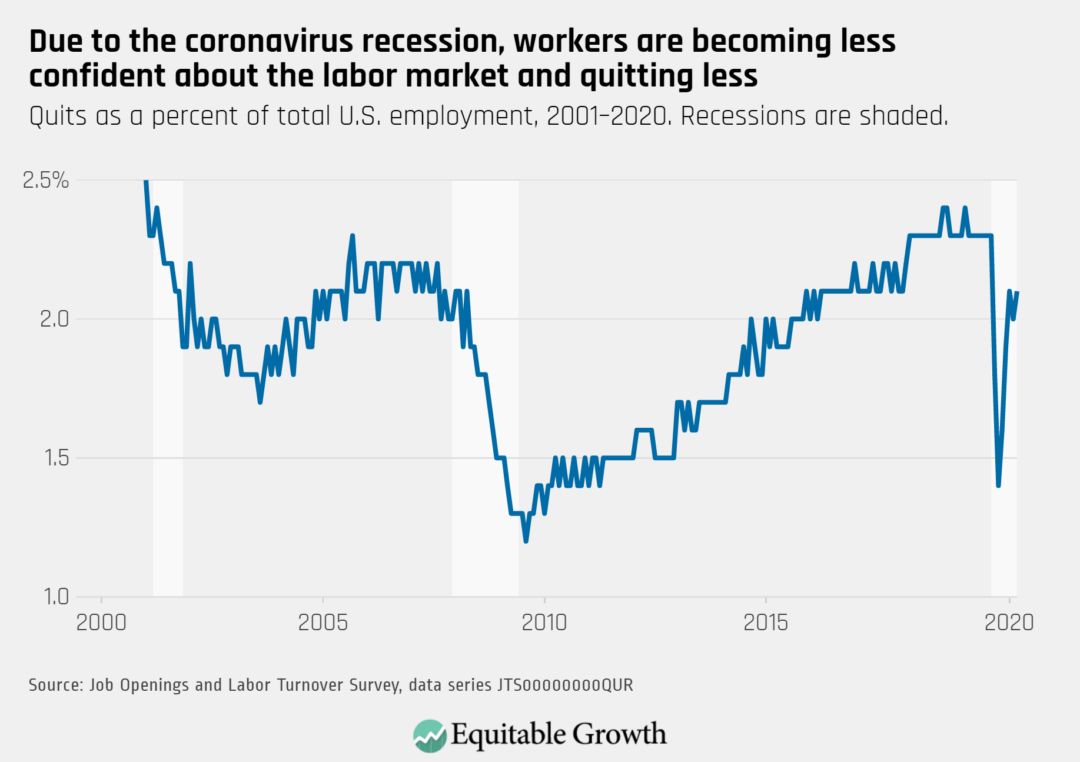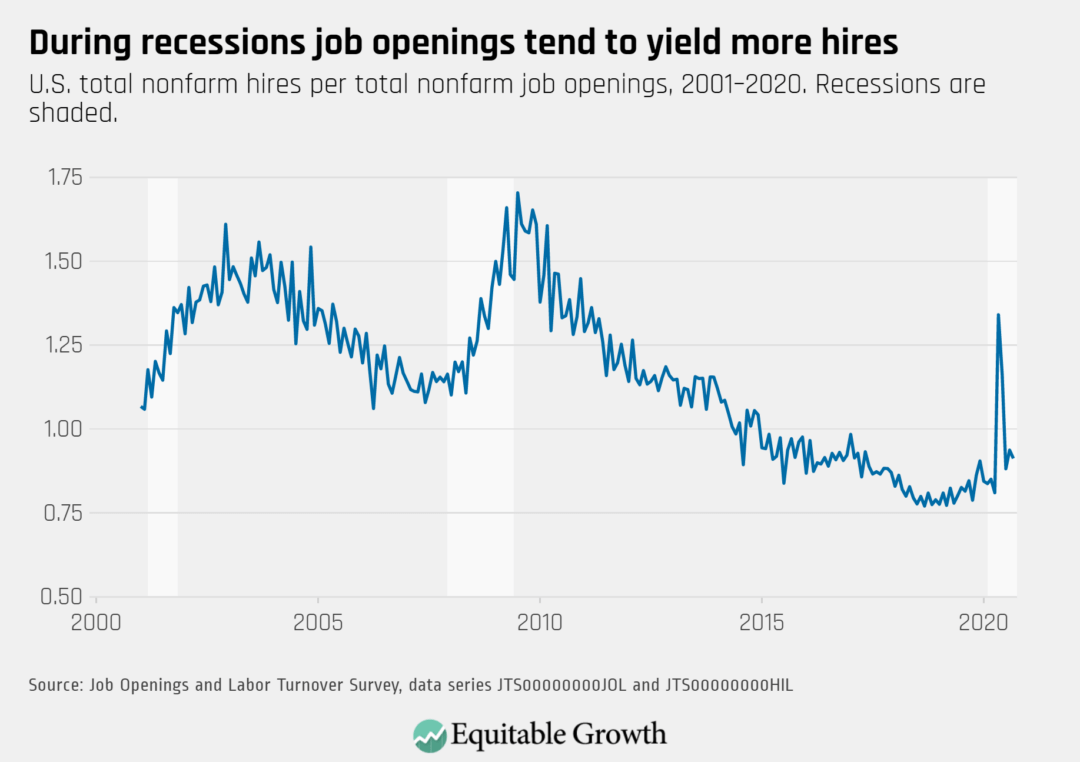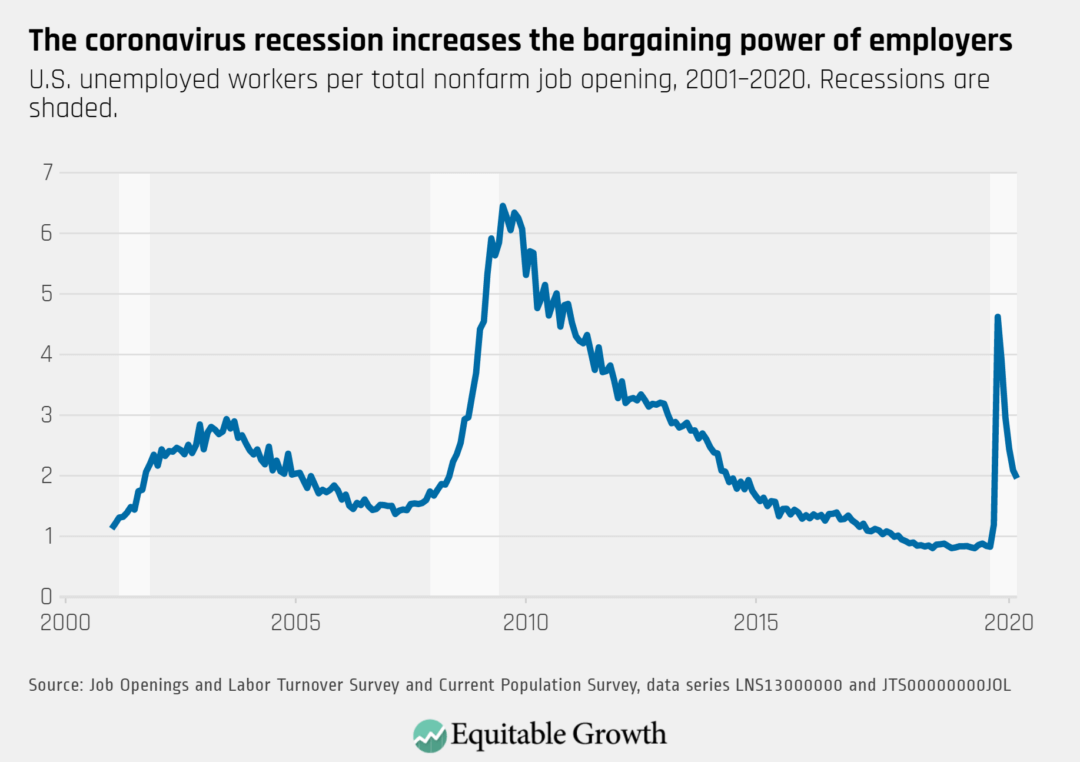JOLTS Day Graphs: September 2020 Edition
The quits rate increased slightly to 2.1 percent in September, signaling stalled prospects for workers.

The vacancy yield was essentially unchanged in September, as the rate of job openings stayed at 4.3 percent and the rate of hires remained at 4.1 percent. Hires decreased significantly in the federal government due to a drop in demand for 2020 Census workers, but hires also fell in retail and educational services.

Since job openings remained unchanged and unemployment declined, the ratio of unemployed-worker-per-opening dropped slightly to 1.95.

The Beveridge Curve continues to move closer to typical territory in September as unemployment declined, but job openings did not increase in the tenuous recovery.


